- Home
- Robert Silverberg
Worlds of Maybe
Worlds of Maybe Read online
Worlds
of
Maybe
Seven
Stories
of
Science Fiction
Edited by
Robert Silverberg
THOMAS NELSON INC.
New York Camden
Books by Robert Silverberg
Revolt on Alpha C
Lost Race of Mars
Time of the Great Freeze
Conquerors from the Darkness
Planet of Death
The Gate of Worlds
The Calibrated Alligator
Needle in a Timestack
To Open the Sky
Thorns
The Masks of Time
The Time Hoppers
Hawksbill Station
Recalled to Life
Starman’s Quest
Earthmen and Strangers (editor)
Voyagers in Time (editor)
Men and Machines (editor)
Tomorrow’s Worlds (editor)
Three for Tomorrow (editor)
No character in this book is intended to represent any actual person; all the incidents of the stories are entirely fictional in nature.
Copyright © 1970 by Robert Silverberg
All rights reserved under International and Pan-American Conventions. Published in Camden, New Jersey, by Thomas Nelson Inc. and simultaneously in Toronto, Canada, by Thomas Nelson & Sons (Canada) Limited.
First edition
Library of Congress Catalog Card Number: 73-123115
Manufactured in the United States of America
“Sidewise in Time." by Murray Leinster, copyright 1934 by Street & Smith Publications, Inc. Reprinted by permission of the author and his agents, Scott Meredith Literary Agency, Inc., 580 Fifth Avenue, New York, New York, 10036.
“Sail On! Sail On!” by Philip Jose Farmer, copyright 1952 by Better Publications, Inc. Postscript, copyright © 1968 by Harry Harrison. Both reprinted by permission of the author and his agents, Scott Meredith Literary Agency, Inc.
“Slips Take Over,” by Miriam Allen deFord, copyright © 1964 by Mercury Press, Inc. Reprinted by permission of the author.
“All the Myriad Ways,” by Larry Niven, copyright © 1968 by Galaxy Publishing Corporation. Reprinted by permission of the author.
“Living Space,” by Isaac Asimov, copyright © 1956 by Columbia Publications, Inc. Reprinted by permission of the author.
“Translation Error,” by Robert Silverberg, copyright © 1959 by Street & Smith Publications, Inc. Reprinted by permission of the author and his agents, Scott Meredith Literary Agency, Inc.
“Delenda Est,” by Poul Anderson, copyright © 1955 by Fantasy House, Inc. Reprinted by permission of the author and his agents, Scott Meredith Literary Agency, Inc.
Contents
Introduction
Sidewise in Time by Murray Leinster
Sail On! Sail On! by Philip José Farmer
Slips Take Over by Miriam Allen deFord
All the Myriad Ways by Larry Niven
Living Space by Isaac Asimov
Translation Error by Robert Silverberg
Delenda Est by Poul Anderson
Introduction
One of science fiction’s most fascinating themes is that of the alternate world. What if history had not taken the course we know? What if Napoleon had died in infancy, or the Thirteen Colonies had lost the American Revolution, or the Roman Empire had lasted another thousand years? The writer makes his one basic history-changing assumption; then he plunges his characters into a world that never was, and investigates all the imaginable consequences of that world’s divergence from the “real” time-line. The result, if the work is done intelligently and perceptively, is an excursion into speculative history, stimulating and strange.
The theme can be handled in many ways. The writer may suppose that an infinite number of worlds of maybe exist simultaneously, as parallel universes. One of them is our world. In the world next door, the atomic bomb was never invented. In the world beyond that, electricity is unknown. In the world beyond that, mankind never evolved. And so on, through as many variations as anyone wishes, with the characters stepping from world to world as the plot dictates. Or, perhaps, the writer will want to assume that only one “real” world can exist at a time, but that it is possible to enter the past and make some alteration that will throw that world into some alternate probability-track —say, by assassinating Mohammed, or giving Thomas Edison the secret of nuclear energy in 1880. The possibilities are endless.
The first known example of the world-of-maybe story is “Hands Off” by Edward Everett Hale, published in Harpers Magazine in 1898. This subtle little theological fantasy made the assumption that Joseph, the son of Jacob, had not been sold into slavery in Egypt, but rather had escaped the slave traders and returned to his fathers camp in the desert. Whereupon —without the shrewd mind of Joseph to guide its government—Egypt was conquered by Canaanite barbarians, who went on to engulf the rest of the ancient world; Judaism died out, the great culture of Greece never had a chance to emerge, Rome was crushed, and a reign of “lust, brutality, terror, cruelty, carnage, famine, agony, horror” descended on humanity, until, after a series of hideous wars, civilization perished entirely. All because Joseph, son of Jacob, had never reached the court of Pharaoh!
Successors to Hale’s brilliant story were slow in coming. In 1931, finally, there appeared an extraordinary volume called If It Had Happened Otherwise: Lapses Into Imaginery History, edited by J. C. Squire. This was not exactly a work of science fiction, since most of its eleven contributions had the form of historical essays, not of stories; but each of the distinguished authors—Winston Churchill, Hilaire Belloc,
G. K. Chesterton, and Andre Maurois were among them—offered a speculative exploration of a world of maybe. Churchill’s piece was called “If Lee Had Not Won the Battle of Gettysburg,” and the other contributors examined such themes as “If Booth Had Missed Lincoln” and “If Napoleon Had Escaped to America.” The world-of-maybe theme became part of science fiction’s repertoire in 1934, when Murray Leinster’s short novel, “Sidewise in Time,” appeared in Astounding Stories, the leading science-fiction magazine of the period. Since then it has been tackled often. Unfortunately for the purposes of this anthology, many writers have preferred to develop their alternate-world ideas at novel length, for that allows them to dwell in detail on the ramifications of their imaginary universes. Space would not permit the inclusion here of such extraordinary long works as Ward Moore’s Bring the Jubilee (in which the South won the Civil War), Philip K. Dick’s The Man in the High Castle (unforgettably depicting an Axis-conquered United States), or L. Sprague de Camp’s rollicking The Wheels of If (in which the Norsemen rule the New World in the twentieth century). Among more recent novels of this type, we have Keith Roberts’ Pavane, showing a twentieth-century England untouched by the Industrial Revolution as the result of the assassination of Queen Elizabeth I in 1588, and Randall Garrett’s Too Many Magicians, set in a very different sort of twentieth-century England, which traces its course of development back to Richard the Lion-Hearted (who in Garrett’s universe lived long, ruled wisely, and built a great empire). My own novel The Gate of Worlds deals with a twentieth-century America ruled by the Indians: a Turkish conquest of Europe in medieval times had prevented the European invasion of the New World.
Though it was impossible to use any of the novel-length worlds-of-maybe stories, I have been able to gather here a representative sampling of shorter works that display the various facets of this branch of science fiction. Though they cannot offer the same rich harvest of ideas as full-scale novels, I think they provide ample entertainment in their own right, giving excellent testimony of the diversit
y of science fiction.
—Robert Silverberg
Worlds of Maybe
Sidewise in Time by Murray Leinster
It is no secret whatever within the science-fiction world that Murray Leinster is the pseudonym of a soft-spoken Virginia gentleman named Will F. Jenkins, whose longevity record is unmatched in the field. When the first science-fiction magazine, Amazing Stories, was founded in 1926, Jenkins was already a science-fiction master with more than a decade of professional work behind him. When a new magazine called Astounding Stories appeared late in 1929, he contributed a story to its first issue. And as the decades passed, Jenkins remained— publishing the classic “First Contact” in that same Astounding in 1945, picking up a Hugo for “Exploration Team ’ in 1956, and continuing to write stories and books on into the 1970’s.
“Sidewise in Time” was first published in 1934, which makes it something of a literary antique, as science-fiction stories go. But time has not impaired the freshness and vigor of its plot, nor can it ever detract from the story s historical importance. For this was the work that introduced the parallel-worlds theme into science fiction. Its vivid depiction of a time-quake that jumbles past, present, and future inaugurated the subspecies of science fiction with which this anthology is concerned, and earns this memorable story the place of honor here.
Looking back, it seems strange that only James Minott figured the thing out in advance. The indications were more than plain. In early December Professor Michaelson announced his finding that the speed of light was not an absolute—could not be considered invariable. That, of course, was one of the first indications of what was to happen. A second indication came on February 15th, when at 12:40 p.m. Greenwich mean time, the sun suddenly shone blue-white and the enormously increased rate of radiation raised the temperature of the earth's surface by twenty-two degrees Fahrenheit in five minutes. At the end of the five minutes, the sun went back to its normal rate of radiation without any other symptom of disturbance. A great many bids for scientific fame followed, of course, but no plausible explanation of the phenomenon accounted for a total lack of after-disturbances in the suns photosphere.
For a third clear forerunner of the events of June, on March 10th, the male giraffe in the Bronx Zoological Park, in New York, ceased to eat. In the nine days following, it changed its form, absorbing all its extremities, even its neck and head, into an extraordinary, egg-shaped mass of still-living flesh and bone which on the tenth day began to divide spontaneously and on the twelfth was two slightly pulsating fleshy masses. A day later still, bumps appeared on the two masses. They grew, took form and design, and twenty days after the beginning of the phenomenon were legs, necks, and heads. Then two giraffes, both male, moved about the giraffe enclosure. Each was slightly less than half the weight of the original animal. They were identically marked. And they ate and moved and in every way seemed normal though immature animals. An exactly similar occurrence was reported from the Argentine Republic, in which a steer from the pampas was going through the same extraordinary method of reproduction under the critical eyes of Argentine scientists.
Nowadays it seems incredible that the scientists of the time should not have understood the meaning of these oddities. We now know something of the type of strain which produced them, though they no longer occur. But between January and June the news-services of the nation were flooded with items of similar import. For two days the Ohio River flowed upstream. For six hours the trees in Euclid Park, in Cleveland, lashed their branches madly as if in a terrific storm, though not a breath of wind was stirring. And in New Orleans, near the last of May, fishes swam up out of the Mississippi River through the air, proceeded to “drown” in the air which inexplicably upheld them, and then turned belly-up and floated placidly at an imaginary water-level some fifteen feet above the pavements of the city.
But it seems clear enough that Minott was the only man in the world who guessed the meaning of these now clear-cut indications of later events. He was then an instructor in mathematics on the faculty of Robinson College, in Fredericksburg, Virginia. We know that he anticipated very nearly every one of the happenings which we still only partly understand, though they affected every human being in our world—and in other worlds most of us had never dreamed could exist.
He made no attempt to share his knowledge with the rest of us. At first glance it seems unbelievable, but actually the attempt would have been useless. He was merely an instructor—not even a full professor—in what can only be called a jerkwater college. He had no scientific reputation, and even his fellow faculty members and all his former instructors at Johns Hopkins University considered him brash, cocky, unreliable, and thoroughly in need of having his ears pinned back. They would have taken great pleasure in putting him in his place. Had he attempted to publicize his foreknowledge he would surely have been firmly deprived of any chance at a hearing. His mathematics, in any case, were undoubtedly so far advanced that only a very limited number of people would have been able to understand them—as was the case with Einstein’s relativity theory at the beginning—and there could be no experimental proof except the universal experience which came later.
Even had he tried to use the preliminary signs— noted above—as proofs of his explanation and mathematics, he would have been considered insane.
And yet he knew. Whether his first clue was Michaelsons report on the variable velocity of light, which proved the existence of strains of a sort never before reported—the speed of light has now ceased to be variable, by the way—or whether another of the eccentric variations in natural law suggested his calculations, we cannot even guess. But he knew what was going to happen before it did. He knew it so thoroughly that he had calculated our chances of survival at one in four. Which pessimistic estimate alone would have caused him to be shouted down instantly had he offered his knowledge ahead of time.
In any event, he made no effort to give warning. He bought revolvers and books. He had sandwiches made. He arranged to hire horses—and this was his preparation for the greatest danger that has ever existed, anywhere, and for the most exotic enterprise any man ever attempted. Maybe he succeeded. We shall never know.
The main features of his life are well enough established. He was the son of a small farmer in West Virginia, with no history of previous genius in his family. He attended a rural grammar and consolidated high school, and seems to have annoyed each and every teacher with whom he came in contact. He worked his way through Johns Hopkins University, in Baltimore, displaying the same talent for unpopularity.
He had brains. We know that now! But he was aware of them too, and so pushingly ambitious to prove and use them that he aroused antagonism wherever he went. The story is now classic, of the term-paper he submitted in his junior year, covering a problem in the calculus of probability. He solved the problem in wholly orthodox fashion, and added a scornful note: “The above is what I was supposed to do to get a good grade. It happens to be idiotically wrong. The problem should be solved as below:'
And then he re-stated the problem in a fashion of which his instructor could not make head or tail, and got an answer normal mathematics would not justify. The term-paper was preserved by accident, and after his genius had been proved it was closely studied. The result is that Minott’s Equation is now regarded with reverence and has changed the whole mathematical treatment of some aspects of probability.
The world lost a great deal through the sheer unamiability of Minott’s character. He was embittered by his own impatience, frustrated by his own intelligence, and undoubtedly cursed with an ambition not seemly in an instructor in mathematics at Robinson College, Fredericksburg. Perhaps if he had had normal emotional ties the world would have benefited. Perhaps he would have, also. But it is useless to guess. We do know that if we had the notes he burned on the night of June 4th our mathematics would be so greatly advanced as to be practically a new science bringing all knowledge into a new unity. The few unburned scraps found in the fireplace of his
living-room have given tantalizing glimpses of that science. They are invaluable. Some partly-burned fragments have been infuriating in their incompleteness. But he must have taken his most valuable notes with him, into that un-guessed-at place where he may still live and work.
He would be amused at the diligence with which his least-considered scribble is now discussed by men who would have ignored him before. Perhaps—it is quite possible—he may have invented a word for the scope of the catastrophe we escaped. We have no word for it as yet. There is no term which can indicate a disaster in which not only the earth but our whole solar system would have been destroyed. Not only our solar system but our galaxy. Not only our galaxy but every other island universe in all the space we know. And even more than that, the destruction of time itself, meaning not only the obliteration of present and future, but even the annihilation of the past so that it would never have been. And then, besides, all those other strange states of existence we now know of, those other universes, those other pasts and presents and futures—all to be shattered into nothingness. There is no word for such a catastrophe!
It would be interesting to know what Minott termed it to himself as he coolly prepared to take advantage of the one chance in four of survival if that should be the one to eventuate. But it is easier merely to wonder how he felt when the morning of June 5th dawned. We do not know, of course. We cannot know. All we can be certain of is how we felt—and what happened.
It was 7:30 a.m. of June 5th. The city of Joplin, Missouri, awaked from a comfortable, summer-night sleep. Dew glistened upon grass-blades and leaves and the filmy webs of morning-spiders glittered like diamond-dust in the early sunshine. In the most easterly suburb a high-school boy, yawning, came somnolently out of his house to mow the lawn before school-time. A rather rickety family car roared, a block away. It back-fired, stopped, roared again, and throttled down to a steady, waiting hum. The voices of children sounded among the houses. A colored washwoman appeared, striding beneath the trees which lined this strictly residential street. From an upper window a radio blatted: “—one, two, three, four! Higher, now!—three, four! Put your weight into it!—two, three, four! . . The radio suddenly squawked and began to emit an insistent, mechanical shriek which changed again to a squawk and then a terrific sound as of all the static of ten thousand thunder-storms on the air at once. Then it was silent.

 The Longest Way Home
The Longest Way Home Hawksbill Station
Hawksbill Station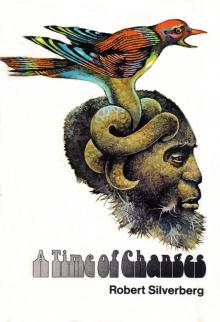 A Time of Changes
A Time of Changes This Way to the End Times: Classic Tales of the Apocalypse
This Way to the End Times: Classic Tales of the Apocalypse Beyond the Gate of Worlds
Beyond the Gate of Worlds Lord Valentine's Castle
Lord Valentine's Castle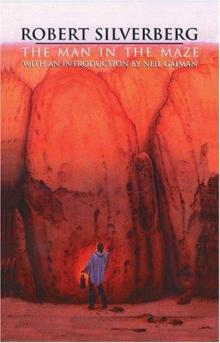 The Man in the Maze
The Man in the Maze Tales of Majipoor
Tales of Majipoor Time of the Great Freeze
Time of the Great Freeze The Collected Stories of Robert Silverberg, Volume 3: Something Wild Is Loose: 1969-72
The Collected Stories of Robert Silverberg, Volume 3: Something Wild Is Loose: 1969-72 Planet of Death
Planet of Death Trips: The Collected Stories of Robert Silverberg, Volume Four
Trips: The Collected Stories of Robert Silverberg, Volume Four In the Beginning: Tales From the Pulp Era
In the Beginning: Tales From the Pulp Era Hot Sky at Midnight
Hot Sky at Midnight Valentine Pontifex
Valentine Pontifex Up the Line
Up the Line Thorns
Thorns Amanda and the Alien
Amanda and the Alien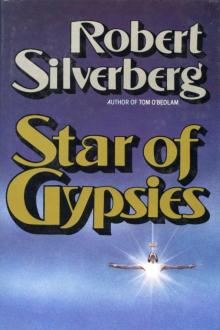 Star of Gypsies
Star of Gypsies Nightwings
Nightwings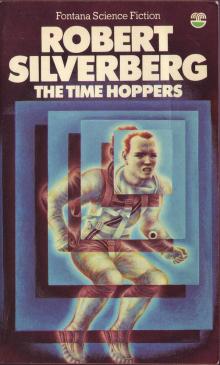 The Time Hoppers
The Time Hoppers Blood on the Mink
Blood on the Mink Dying Inside
Dying Inside The Last Song of Orpheus
The Last Song of Orpheus The King of Dreams
The King of Dreams The Stochastic Man
The Stochastic Man The Collected Stories of Robert Silverberg, Volume Seven: We Are for the Dark
The Collected Stories of Robert Silverberg, Volume Seven: We Are for the Dark The Millennium Express: The Collected Stories of Robert Silverberg, Volume Nine
The Millennium Express: The Collected Stories of Robert Silverberg, Volume Nine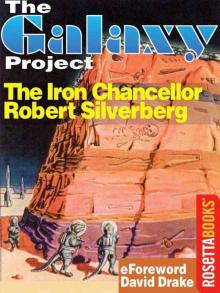 The Iron Chancellor
The Iron Chancellor Lord Prestimion
Lord Prestimion To Open the Sky
To Open the Sky The World Inside
The World Inside Chains of the Sea
Chains of the Sea The Collected Stories of Robert Silverberg, Volume Five: The Palace at Midnight
The Collected Stories of Robert Silverberg, Volume Five: The Palace at Midnight Postmark Ganymede
Postmark Ganymede The Second Trip
The Second Trip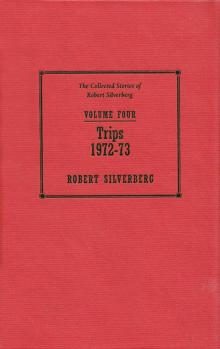 The Collected Stories of Robert Silverberg, Volume 4: Trips: 1972-73
The Collected Stories of Robert Silverberg, Volume 4: Trips: 1972-73 Son of Man
Son of Man Tom O'Bedlam
Tom O'Bedlam To the Land of the Living
To the Land of the Living To Be Continued: The Collected Stories of Robert Silverberg, Volume One
To Be Continued: The Collected Stories of Robert Silverberg, Volume One Shadrach in the Furnace
Shadrach in the Furnace The Chalice of Death: Three Novels of Mystery in Space
The Chalice of Death: Three Novels of Mystery in Space The Queen of Springtime
The Queen of Springtime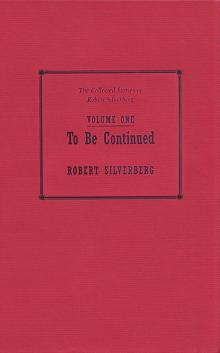 To Be Continued 1953-1958
To Be Continued 1953-1958 Legends
Legends Roma Eterna
Roma Eterna To Live Again
To Live Again At Winter's End
At Winter's End Needle in a Timestack
Needle in a Timestack To Live Again and the Second Trip: The Complete Novels
To Live Again and the Second Trip: The Complete Novels Lord of Darkness
Lord of Darkness The Mountains of Majipoor
The Mountains of Majipoor The World Outside
The World Outside The Alien Years
The Alien Years The Book of Skulls
The Book of Skulls The Face of the Waters
The Face of the Waters Gilgamesh the King
Gilgamesh the King The Collected Stories of Robert Silverberg, Volume 6: Multiples: 1983-87
The Collected Stories of Robert Silverberg, Volume 6: Multiples: 1983-87 The Happy Unfortunate
The Happy Unfortunate Three Survived
Three Survived Cronos
Cronos Tower of Glass
Tower of Glass Legends II
Legends II The Planet Killers
The Planet Killers The Collected Stories of Robert Silverberg, Volume 2: To the Dark Star: 1962-69
The Collected Stories of Robert Silverberg, Volume 2: To the Dark Star: 1962-69 Downward to the Earth
Downward to the Earth Lord Valentine's Castle: Book One of the Majipoor Cycle
Lord Valentine's Castle: Book One of the Majipoor Cycle Hot Times in Magma City, 1990-95
Hot Times in Magma City, 1990-95 Hunt the Space-Witch! Seven Adventures in Time and Space
Hunt the Space-Witch! Seven Adventures in Time and Space Majipoor Chronicles
Majipoor Chronicles The Robert Silverberg Science Fiction Megapack(r)
The Robert Silverberg Science Fiction Megapack(r) Starman's Quest
Starman's Quest Car Sinister
Car Sinister Worlds of Maybe
Worlds of Maybe Fantasy The Best of 2001
Fantasy The Best of 2001 Revolt on Alpha C
Revolt on Alpha C Homefaring
Homefaring The Pardoner's Tale
The Pardoner's Tale Sailing to Byzantium - Six Novellas
Sailing to Byzantium - Six Novellas The Chalice of Death
The Chalice of Death Sundance
Sundance A Tip on a Turtle
A Tip on a Turtle Nebula Awards Showcase 2001: The Year's Best SF and Fantasy Chosen by the Science Fiction and Fantasy Writers of America
Nebula Awards Showcase 2001: The Year's Best SF and Fantasy Chosen by the Science Fiction and Fantasy Writers of America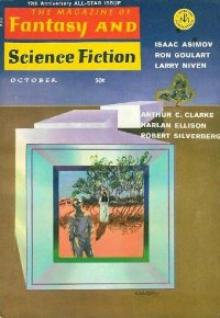 The Fangs of the Trees
The Fangs of the Trees The Palace at Midnight: The Collected Work of Robert Silverberg, Volume Five
The Palace at Midnight: The Collected Work of Robert Silverberg, Volume Five The Millennium Express - 1995-2009 - The Collected Stories of Robert Silverberg Volume Nine
The Millennium Express - 1995-2009 - The Collected Stories of Robert Silverberg Volume Nine Book of Skulls
Book of Skulls Passengers
Passengers Something Wild is Loose - 1969–72 - The Collected Stories of Robert Silverberg Volume Three
Something Wild is Loose - 1969–72 - The Collected Stories of Robert Silverberg Volume Three Multiples
Multiples Starborne
Starborne The Masks of Time
The Masks of Time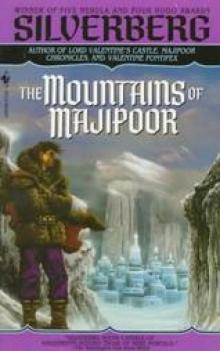 The Mountains of Majipoor m-8
The Mountains of Majipoor m-8 Multiples (1983-87)
Multiples (1983-87) Those Who Watch
Those Who Watch In the Beginning
In the Beginning Earth Is The Strangest Planet
Earth Is The Strangest Planet Collision Course
Collision Course Neutral Planet
Neutral Planet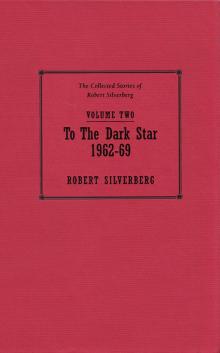 To the Dark Star - 1962–69 - The Collected Stories of Robert Silverberg Volume Two
To the Dark Star - 1962–69 - The Collected Stories of Robert Silverberg Volume Two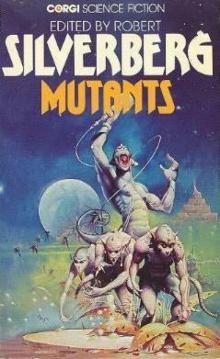 Mutants
Mutants Sailing to Byzantium
Sailing to Byzantium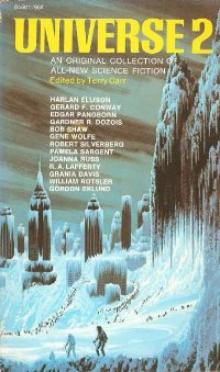 When We Went to See the End of the World
When We Went to See the End of the World Robert Silverberg The Science Fiction Hall Of Fame Volume One, 1929-1964
Robert Silverberg The Science Fiction Hall Of Fame Volume One, 1929-1964 To Be Continued - 1953–58 - The Collected Stories of Robert Silverberg Volume One
To Be Continued - 1953–58 - The Collected Stories of Robert Silverberg Volume One Valentine Pontifex m-3
Valentine Pontifex m-3 Gianni
Gianni Majipoor Chronicles m-2
Majipoor Chronicles m-2 We Are for the Dark (1987-90)
We Are for the Dark (1987-90) Waiting for the Earthquake
Waiting for the Earthquake Fantasy: The Best of 2001
Fantasy: The Best of 2001 How It Was When the Past Went Away
How It Was When the Past Went Away Beauty in the Night
Beauty in the Night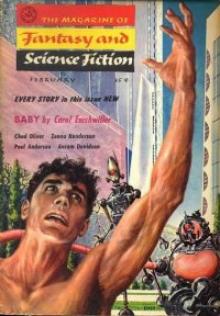 The Man Who Never Forgot
The Man Who Never Forgot The Book of Changes m-9
The Book of Changes m-9 Lord Valentine's Castle m-1
Lord Valentine's Castle m-1 This Way to the End Times
This Way to the End Times Queen of Springtime
Queen of Springtime Legends-Volume 3 Stories by the Masters of Modern Fantasy
Legends-Volume 3 Stories by the Masters of Modern Fantasy The Palace at Midnight - 1980–82 - The Collected Stories of Robert Silverberg Volume Five
The Palace at Midnight - 1980–82 - The Collected Stories of Robert Silverberg Volume Five Something Wild is Loose: The Collected Stories of Robert Silverberg, Volume Three
Something Wild is Loose: The Collected Stories of Robert Silverberg, Volume Three Multiples - 1983–87 - The Collected Stories of Robert Silverberg Volume Six
Multiples - 1983–87 - The Collected Stories of Robert Silverberg Volume Six Alaree
Alaree Three Survived: A Science Fiction Novel
Three Survived: A Science Fiction Novel Defenders of the Frontier
Defenders of the Frontier The New Springtime
The New Springtime We Are for the Dark - 1987–90 - The Collected Stories of Robert Silverberg Volume Seven
We Are for the Dark - 1987–90 - The Collected Stories of Robert Silverberg Volume Seven The Science Fiction Hall of Fame, Volume One 1929-1964--The Greatest Science Fiction Stories of All Time Chosen by the Members of the Science Fiction Writers of America
The Science Fiction Hall of Fame, Volume One 1929-1964--The Greatest Science Fiction Stories of All Time Chosen by the Members of the Science Fiction Writers of America Master Of Life And Death
Master Of Life And Death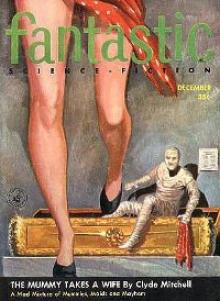 Choke Chain
Choke Chain Sorcerers of Majipoor m-4
Sorcerers of Majipoor m-4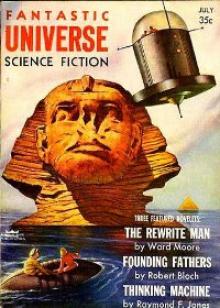 Absolutely Inflexible
Absolutely Inflexible Trips - 1962–73 - The Collected Stories of Robert Silverberg Volume Four
Trips - 1962–73 - The Collected Stories of Robert Silverberg Volume Four Hot Times in Magma City - 1990-95 - The Collected Stories of Robert Silverberg Volume Eight
Hot Times in Magma City - 1990-95 - The Collected Stories of Robert Silverberg Volume Eight Far Horizons
Far Horizons The Queen of Springtime ns-2
The Queen of Springtime ns-2 The Seventh Science Fiction Megapack
The Seventh Science Fiction Megapack Invaders From Earth
Invaders From Earth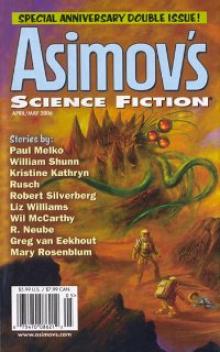 Hanosz Prime Goes To Old Earth
Hanosz Prime Goes To Old Earth The Macauley Circuit
The Macauley Circuit Science Fiction: The Best of 2001
Science Fiction: The Best of 2001 To the Dark Star: The Collected Stories of Robert Silverberg, Volume Two
To the Dark Star: The Collected Stories of Robert Silverberg, Volume Two Stochastic Man
Stochastic Man Legends: Stories By The Masters of Modern Fantasy
Legends: Stories By The Masters of Modern Fantasy To Live Again And The Second Trip
To Live Again And The Second Trip Flies
Flies The Silent Invaders
The Silent Invaders Ship-Sister, Star-Sister
Ship-Sister, Star-Sister